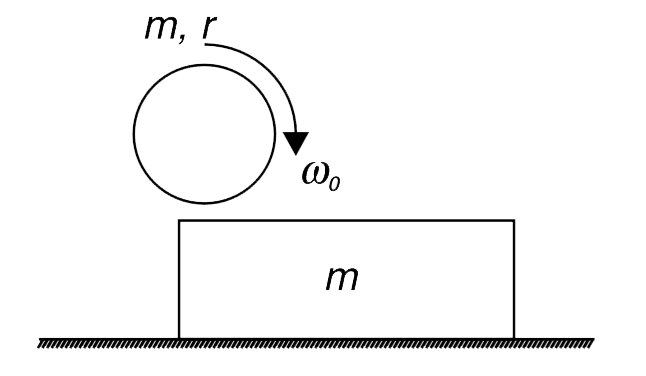Having gone through a plank of thickness h, a bullet changed its velocity from v0 to v1. Find the time of motion of the bullet on the plank, assuming the resistance force to be proportional to the square of the velocity.
The correct Answer is:[h(v0−v)v0vloge(v0/v)]
Step by step video, text & image solution for Having gone through a plank of thickness h, a bullet changed its velocity from v_(0) to v_(1). Find the time of motion of the bullet on the plank, assuming the resistance force to be proportional to the square of the velocity. by Physics experts to help you in doubts & scoring excellent marks in Class 11 exams.
Updated on:21/07/2023Topper's Solved these Questions
- NEWTONS LAWS OF MOTIONBOOK - PHYSICS GALAXY - ASHISH ARORACHAPTER - NEWTONS LAWS OF MOTIONEXERCISE - Advance MCQs
17 Videos
- LINEAR MOMENTUM & ITS CONSERVATIONBOOK - PHYSICS GALAXY - ASHISH ARORACHAPTER - LINEAR MOMENTUM & ITS CONSERVATIONEXERCISE - exercise 1.3
3 Videos
- RIGID BODIES AND ROTATIONAL MOTIONBOOK - PHYSICS GALAXY - ASHISH ARORACHAPTER - RIGID BODIES AND ROTATIONAL MOTIONEXERCISE - Unsolved Numerical
63 Videos
Similar Questions
Having gone through a plank of thickness h, a bullet changed its velocity from v0 to v. Find the time of motion of the bullet in the plank, assuming the resistance force to be proportional to the square of the velocity.
View SolutionHaving gone through a plank of thickness h, a bullet changed its velocity from v0 to v1. Find the time of motion of the bullet on the plank, assuming the resistance force to be proportional to the square of the velocity.
View Solution
Knowledge Check
A gun fires N bullets per second, each of mass m with velocity v. The force exerted by the bullets on the gun is :
AvNmBmvNCmvN2Dmv2NA bullet having a speed of 100m/see crashes through a plank of wood. After passing through a plank , its speed is 80m/s. Another bullet of the same mass and size , but traveling at 80m/s is fired at the plank . The speed of the second bullet after traveling through the plank is (Assume that resistance of the plank is independent of the speed of the bullet) :
A10√7ms−1B20√7ms−1C30√7ms−1D20√7ms−1A bullet when fired at a target with a velocity of 00 m/s penetrates one metre into it. If the bullet is fired at a similar target with a thickness 0.5 m. Then, it will emerge from it with a velocity of
A50√2msB50√2msC50 m/sD10 m/s
A bullet leaving the muzzle of a rifle barrel with a velocity v penetrates a plank and loses one-fifth of its velocity. It then strikes second plank, which it just penetrates through. Find the ratio of the thickness of the planks, supposing the average resistance to the penetration is same in both the cases.
View SolutionA gun fires N ' bullets per second,each of mass m with velocity v .The force exerted by the bullets on the gun is
View SolutionA bullet losses 1/n of its velocity in passing through a plank. What is the least number of plancks required to stop the bullet ? (Assuming constant retardation)
View SolutionA particle traversed on third of the distance with a velocity v0, the remaining part of the distance was covered with velocity v1 for half the time and with a velocity v2 for the remaining half of time. Assuming motion to be rectilinear, find the the mean velocity of the particle averaged over the whole time of motion.
View SolutionIn the figure shown a plank of mass m is lying at rest on a smooth horizontal surface. A cylinder of same mass m and radius r is rotated to an angular speed w0 and then gently placed on the plank. It is found that by the time the slipping between the plank and the cylinder cease, 50% of total kinetic energy of the cylinder and plank system is lost. Assume that plank is long enough and um is the coefficient of friction between the cylinder and the plank.

(a) Find the final velocity of the plank.
(b) Calculate the magnitude of the change in angular momentum of the cylinder about its centre of mass.
(c) Distance moved by the plank by the time slipping ceases between cylinder and plank.
View Solution
